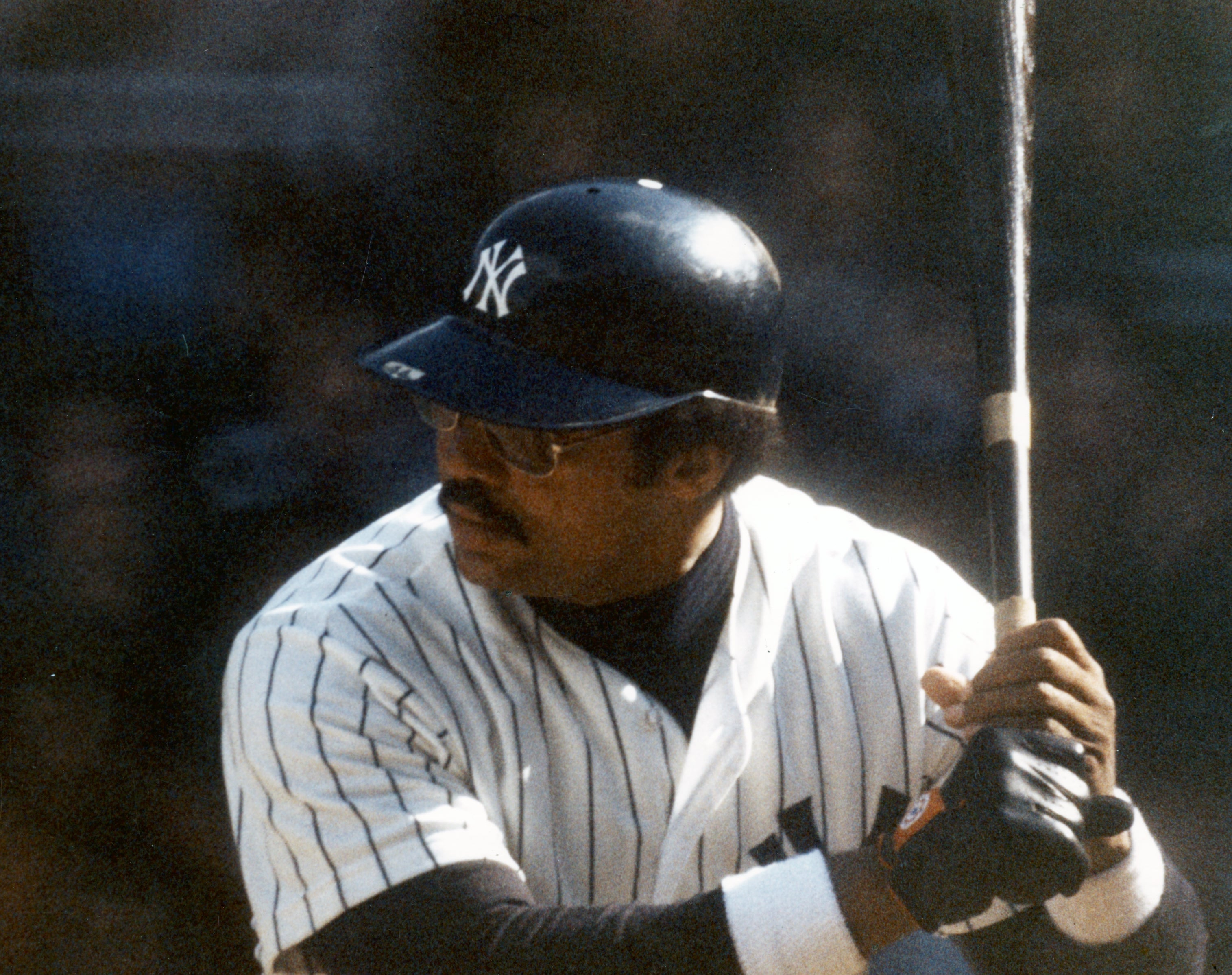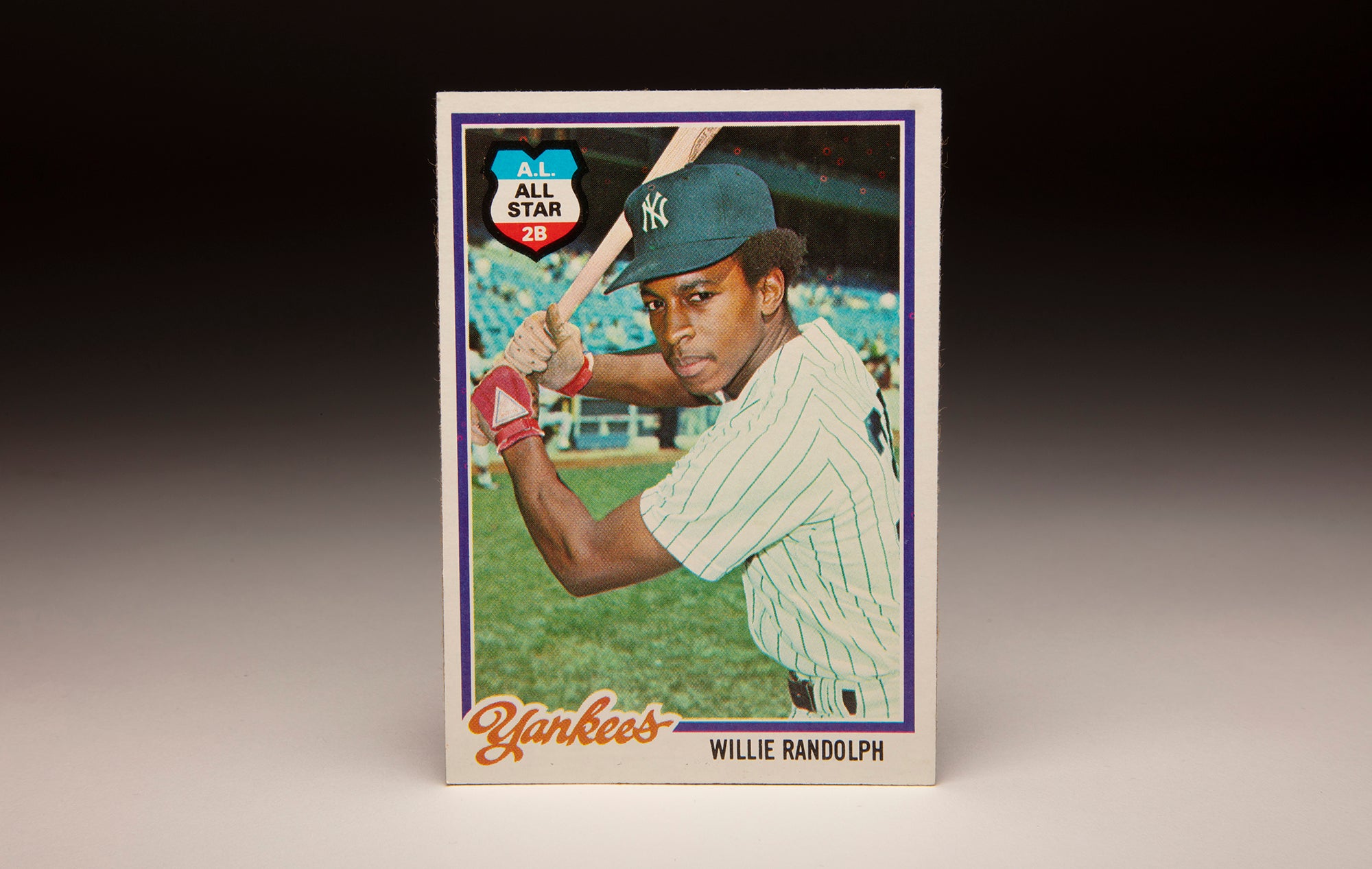- Home
- Our Stories
- #CardCorner: 1978 Topps Ron Guidry
#CardCorner: 1978 Topps Ron Guidry
The category is: Best single-season effort by a pitcher.
The answer just might be: 1978 by Ron Guidry.
All things considered, the package of numbers assembled by the fastballing lefty might never be matched. And though Guidry was unable to duplicate it in subsequent years, his career resume still left him as one of the greatest players in Yankees history.
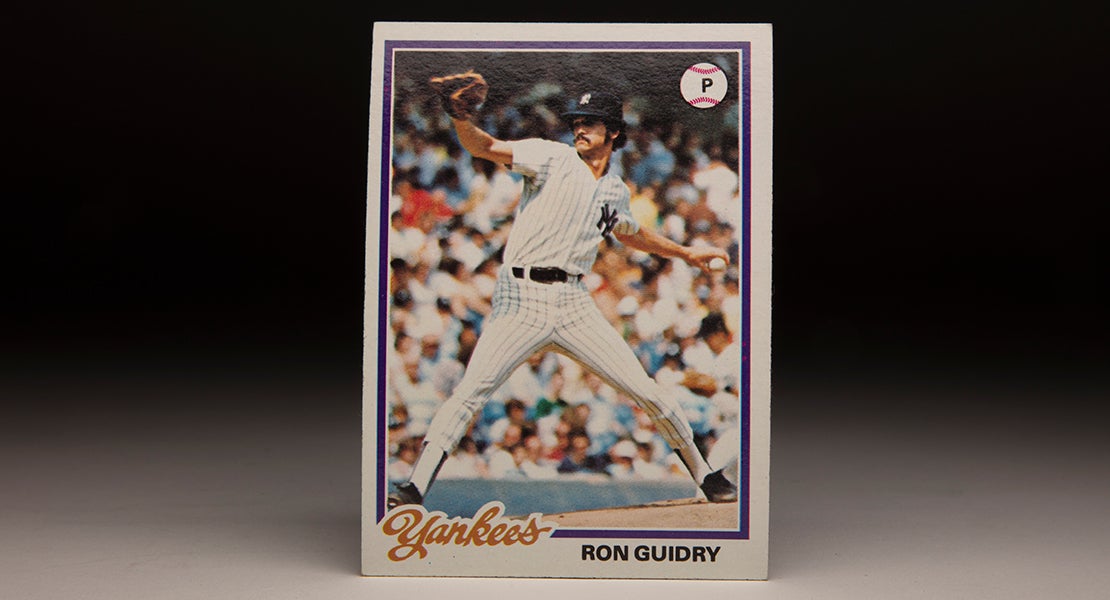
Born Aug. 28, 1950, in Lafayette, La., Guidry lived in nearby Carencro and excelled in youth leagues – able to throw faster than most anyone his own age. His slender build also translated into track and field, where Guidry was an accomplished sprinter and triple jumper for Northside High School in Lafayette.
Raised in Acadiana, or Cajun Country, and fluent in the French-based language of the area, Guidry stayed home to play college ball at the University of Southwestern Louisiana (now the University of Louisiana at Lafayette) after going undrafted by any big league club following his high school graduation in 1968.
“He’s just a country boy, that’s all,” Guidry’s mother, Grace, told the Fort Worth Star-Telegram in 1978.
After starring in college, Guidry was selected by the Yankees in the third round of the 1971 MLB Draft. He signed and reported to Johnson City of the Appalachian League, where he went 2-2 with a 2.11 ERA in seven starts.

“It took a while to convince me he was a pitcher,” Bob Banno, Guidry’s college coach, told the Star-Telegram. “He looked terrible physically. He was (5-foot-11) and about 145 pounds. But he had a natural pitching rhythm and was a fantastic athlete.”
The next three seasons, however, would see Guidry struggle to harness his control. He struck out 158 batters over 167 innings in Class A stops at Fort Lauderdale and Kinston, respectively, in 1972 and 1973, then was moved to the bullpen at Double-A West Haven in 1974, where he went 2-4 with a 5.26 ERA in 77 innings.
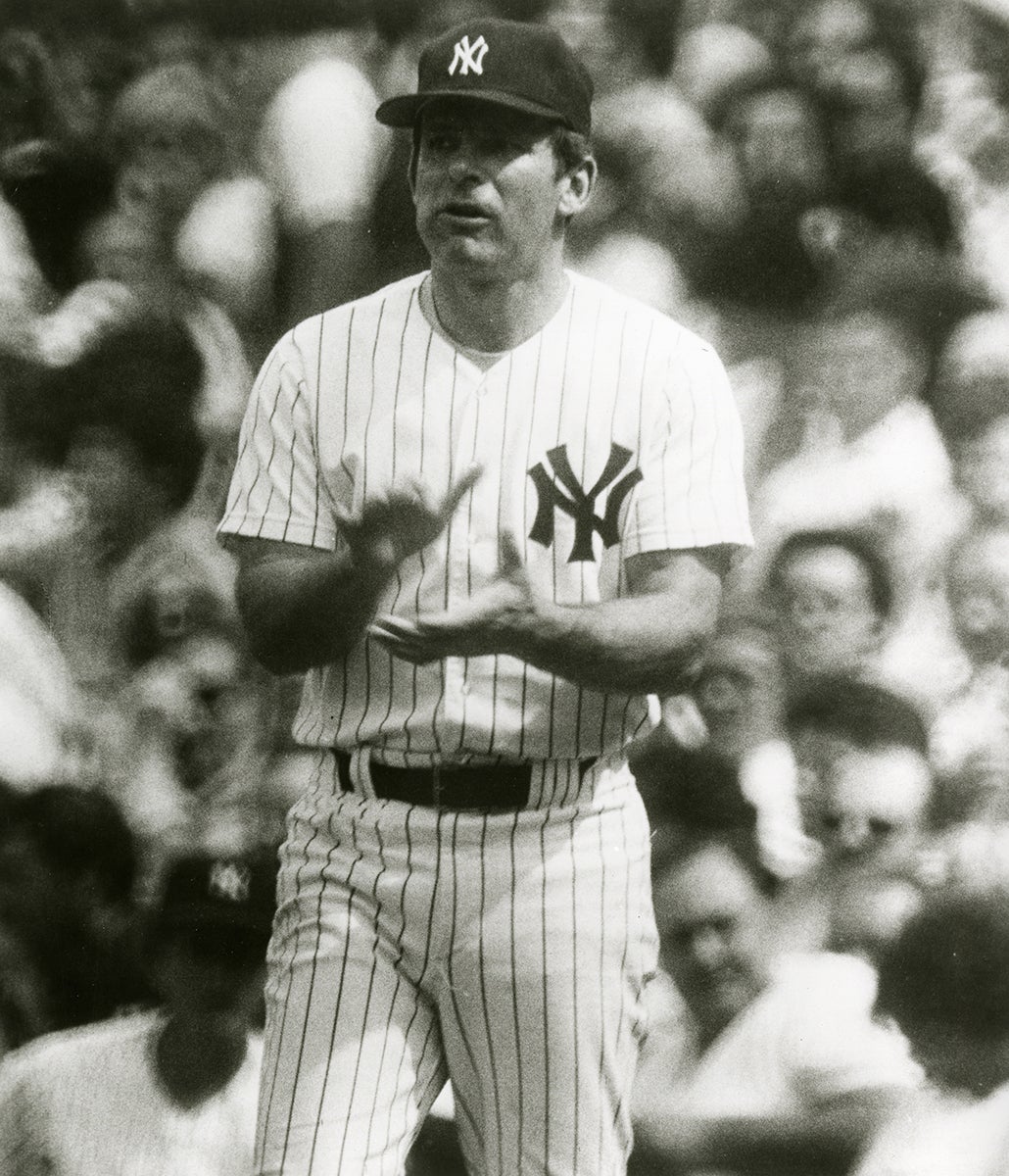
But in 1975, the Yankees promoted Guidry to Triple-A Syracuse, which was managed by future Hall of Famer Bobby Cox. Guidry and Cox developed a mutual respect, and Guidry also developed a slider – a pitch that would soon propel him to the bright lights of New York City and beyond.
“I have added a slider for my (off-speed) pitch,” Guidry told the Syracuse Post Standard after striking out five batters in two innings of relief against the Tidewater Tides on July 25.
Two days later, Guidry was in New York and made his big league debut against the Red Sox on July 27 striking out three batters over two scoreless innings in front of a capacity crowd of 53,631 at Shea Stadium – where the Yankees called home that year as Yankee Stadium was being rebuilt.
“A young man named Ron Guidry came down from upstate New York for Sunday’s doubleheader between the Yankees and the Red Sox at Shea Stadium,” columnist Phil Pepe wrote in the Daily News the next day to highlight the Yankees vs. Red Sox pennant race that was capturing the city’s attention.
Three years later, Guidry would need no such introducing during a pennant race that would go down in history as one of the game’s best.
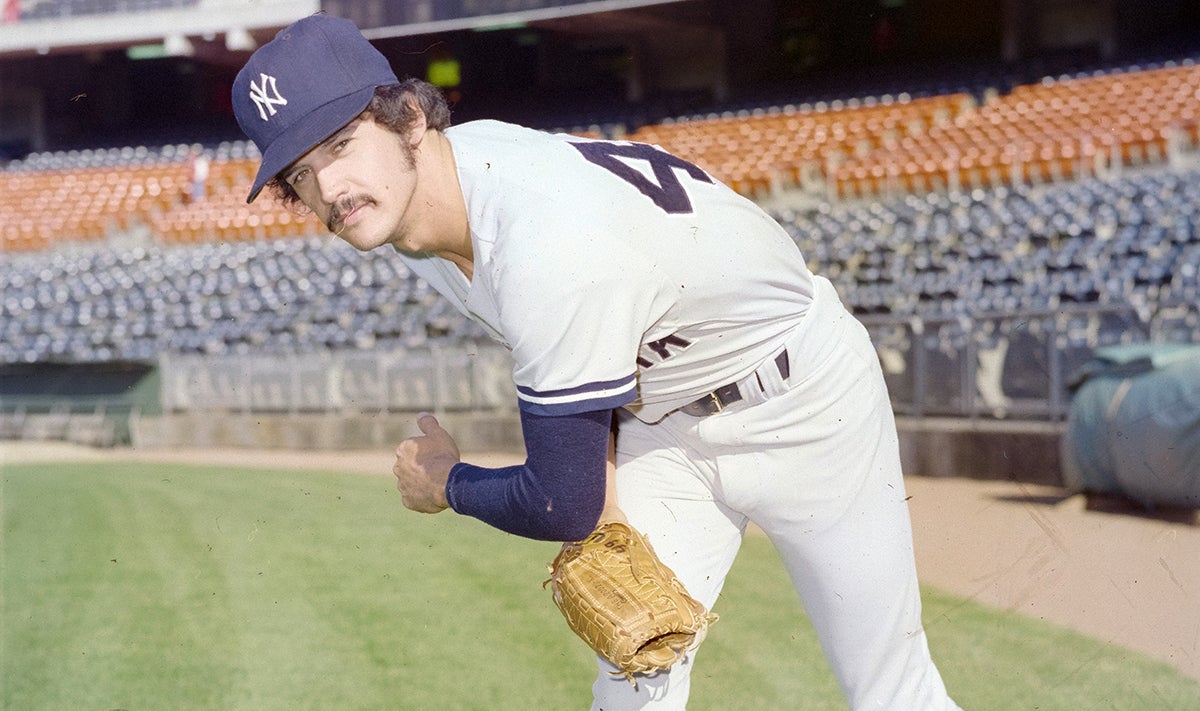
Guidry pitched in nine more games for the Yankees that season, making his first start on Sept. 22 and finishing 0-1 with a 3.45 ERA. The Yankees finished third behind the Red Sox and Orioles in the American League East, and owner George Steinbrenner brought in veteran pitchers Dock Ellis, Ed Figueroa and Ken Brett in the offseason for manager Billy Martin, who took over from Bill Virdon midway through 1975.
Martin, who preferred veteran pitchers over youngsters, sent Guidry back to Triple-A as one of the final cuts prior to the start of the 1976 season.
Guidry put up outstanding numbers in Syracuse and was recalled to the Yankees in May. But in his first appearance against the Red Sox on May 20 – after pitching several games in Syracuse that week – Guidry allowed four runs in one-third of an inning, including a homer to Carl Yastrzemski. He did not pitch for another 47 days before the Yankees sent him back to Triple-A, prompting Guidry to seriously consider quitting.
His wife, Bonnie, convinced Guidry not to abandon his big league dream, and Guidry reported once again to Syracuse. He returned to New York in August and pitched in mop-up roles down the stretch as the Yankees won 97 games and their first AL East title. Guidry appeared in seven games without a decision – and New York, which dropped only 62 contests all season, lost all seven of them.
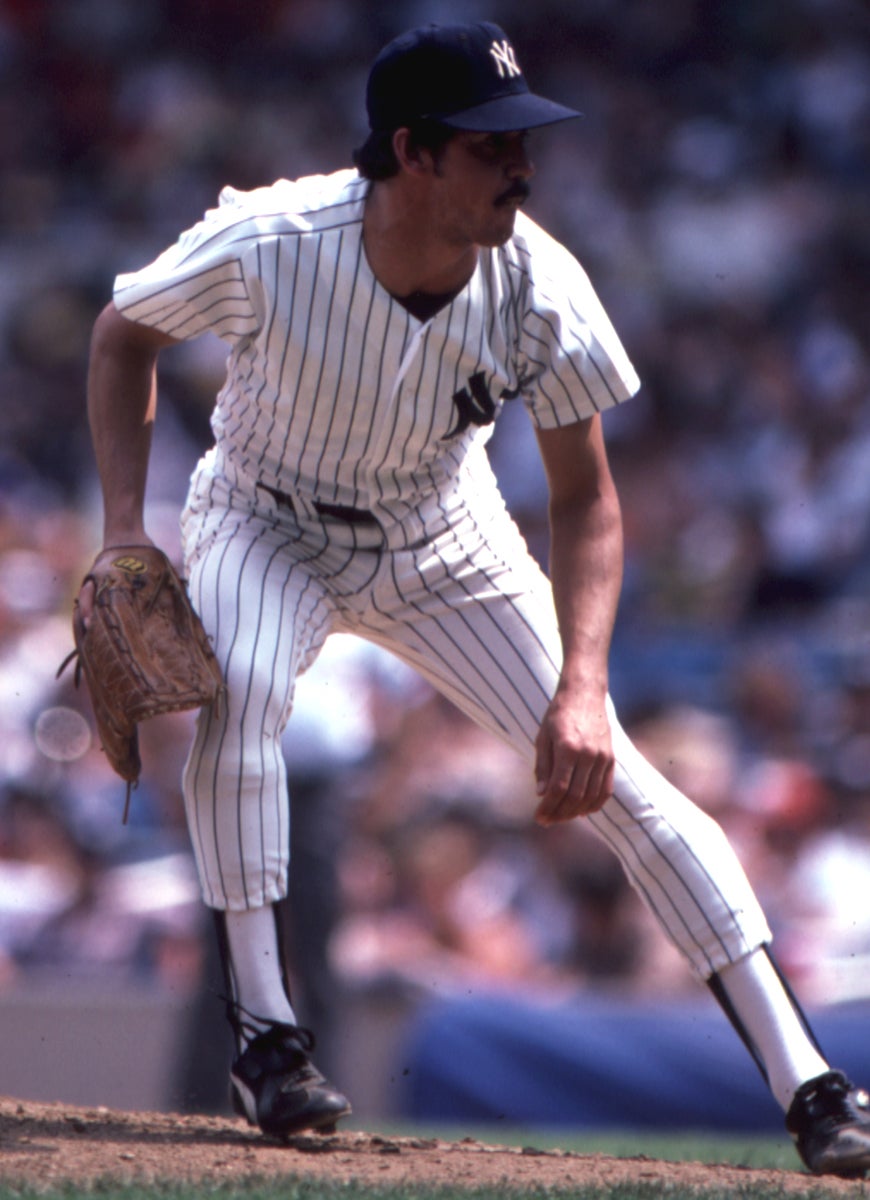
Martin wrestled with the final makeup of his roster for the ALCS vs. the Royals before opting for Guidry over Gene Locklear, a left-handed bench bat who was acquired from the Padres in July.
“I think anybody in my position would have been concerned,” Guidry told The New York Times about waiting to learn if he would be placed on the postseason roster. “I didn’t know what they’d do.”
But Guidry did not pitch in either the ALCS (won in five games by the Yankees) or the World Series (a sweep at the hands of the Reds), though he did pinch run for Elrod Hendricks in Game 4. But that postseason letdown was about to be replaced by a two-year championship run in which Guidry would play a major role.
In Spring Training of 1977, however, Guidry struggled and began the season in the Yankees’ bullpen.
“Can you get anybody out?” Guidry recalled to the Daily News a question Martin asked of him during the exhibition season. “Let me know who it is and I’ll let you pitch to him.”
But Guidry began to get batters out once the regular season began – and he made his first start of the year on April 29, shutting out the Mariners over 8.1 innings while striking out eight in a 3-0 Yankees win. He moved into the rotation permanently in mid-May and was 8-0 over nine starts from mid-August to mid-September before dropping his final decision of the season to finish at 16-7 with a 2.82 ERA over 210.2 innings.
“Got a good slider,” Yankees catcher Thurman Munson told the Daily News about Guidry during his winning streak. “Throws it in and out real good for so little experience. His fastball rises. A rising, unadulterated heater.”
Guidry pitched in two games in the ALCS vs. the Royals, recording a complete game win in New York’s 6-2 Game 2 victory. He was knocked out of the game in the third inning of the decisive Game 5 and was charged with three runs, but the Yankees rallied to win 5-3 to advance to the World Series.
Guidry made one start in the Fall Classic against the Dodgers, throwing a four-hitter in New York’s 4-2 victory in Game 4 that gave the Yankees a 3-games-to-1 advantage. New York would go on to capture the title in six games.
Guidry was now a World Series champion. But his greatest season was still on the horizon.

In 1978, Guidry kept the Yankees afloat early in the season by starting the year 13-0, recording wins all but three his first 16 starts. The pinnacle of the first half came on June 17 against the Angels when he struck out a franchise record 18 batters while shutting out California on four hits in a 4-0 New York win. The performance also set a new AL standard for strikeouts by a left-hander.
It was during this spectacular run that the Yankee Stadium fans began cheering Guidry every time he got two strikes on a batter. It is a tradition that continues in the Bronx to this day, especially with pitchers who deliver large strikeout totals.
“I know they’re behind me on every pitch,” Guidry told the Associated Press after his masterpiece. “And when I don’t strike out a batter, it’s like I let them down.”
The only ones in the Stadium let down that night were the Angels.
“The entire bench was laughing,” Nolan Ryan, who then shared the single-game MLB record with 19 strikeouts, told the AP, “because we felt we were overmatched.”
Guidry could not prevent the Yankees from falling into a double-digit loss-column hole against the Red Sox that summer. But after Martin was replaced by Bob Lemon, the rest of the Yankees began to play up to Guidry’s standard. On Sept. 9, Guidry shut out the Red Sox on two hits at Fenway Park to improve to 21-2 and move New York to one game behind Boston. The next day, the Yankees won again to complete a four-game sweep that became known as the Boston Massacre.
The teams battled throughout September before finishing the year deadlocked at 99-63. The one-game playoff would be played on Monday, Oct. 2, at Fenway, and Guidry would start the game on three days’ rest.
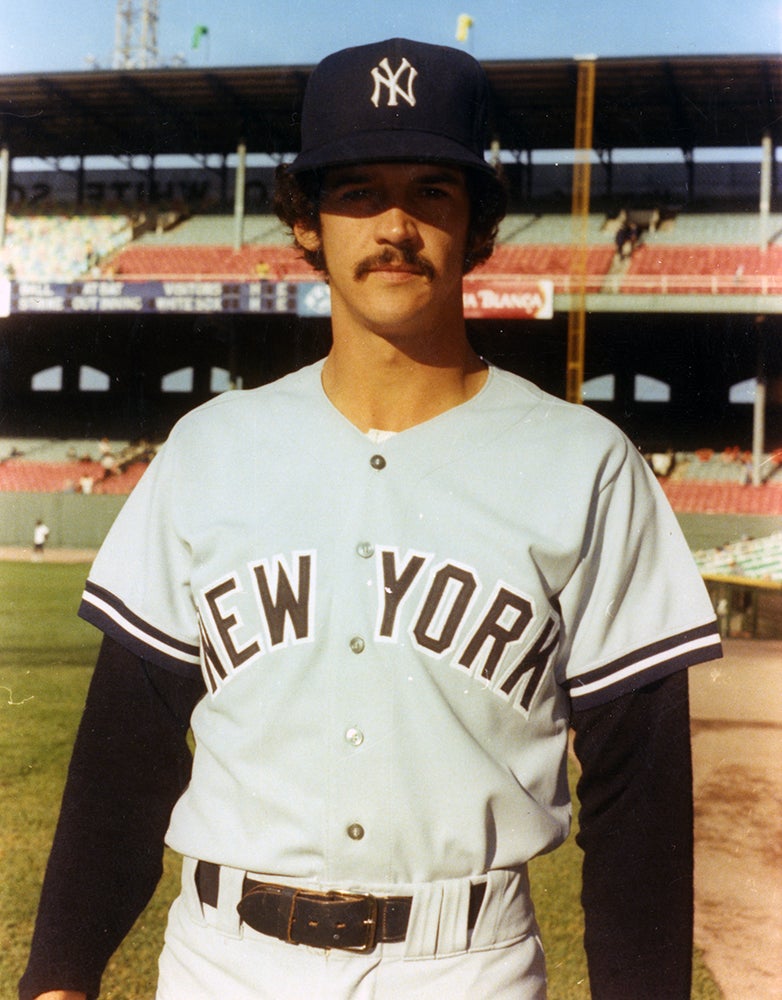
The Red Sox took a 1-0 lead on a Carl Yastrzemski home run in the second inning and pushed the advantage to 2-0 on a Jim Rice RBI single in the sixth. But in the top of the seventh, Bucky Dent’s three-run homer over the Green Monster gave New York the lead, and the Yankees extended the advantage to 4-2 on a Munson double.
In the bottom of the seventh, Guidry struck out Butch Hobson to lead off the frame before a George Scott single ended Guidry’s day. Goose Gossage came on in relief and allowed two runs in the eighth to cut New York’s lead to 5-4 (after a Reggie Jackson home run in the top of the eighth). But Gossage navigated a scoreless ninth to wrap up the win and save Guidry’s 25th victory of the season.
Pitching on short rest, Guidry was hyper-attentive to his body’s condition.
“(The fastball) was good for the first two or three innings,” Guidry told the Kansas City Times after the victory. “But sitting there the long inning (the Yankees’ seventh), I felt my arm tightening up. I told (Lemon) to watch me.
“I didn’t want to give (the Red Sox) a big inning. With a club like this, if you can keep it close…”
Guidry returned to his normal four days' rest in his next start and limited the Royals to one run over eight innings in a 2-1 win in Game 4 of the ALCS to clinch the series for New York. Guidry started Game 3 of the World Series against the Dodgers on five days’ rest, pitching a complete game in New York’s 5-1 win. The Yankees won the series in six games – with Guidry scheduled to start a would-be Game 7 had the Dodgers pushed the Fall Classic to the limit.
It marked the end of a thrilling – and exhausting – two-year run that saw the Yankees overcome challenges inside and outside the clubhouse to return to the top of the baseball world. Guidry was arguably the anchor that made it all possible.
Following the 1978 season, there was little suspense about who would take home the AL Cy Young Award – and Guidry won the honors in a unanimous vote. But the AL Most Valuable Player Award produced a fierce debate on whether it should be Boston’s Jim Rice – who led the AL in hits (213), triples (15), home runs (46), RBI (139) and total bases (406) – or Guidry.
“Jim had a great year,” Guidry told United Press International in late October of 1978 before the AL MVP Award winner was announced. “He has done something no other hitter has done in ages and has had a year equal to what I had, only he’s a hitter and I’m a pitcher.
“This may sound cocky, but I know which one won the battle between us, which was most valuable in going up against the other. He got two base hits off me this year in 11 or 12 times up.”
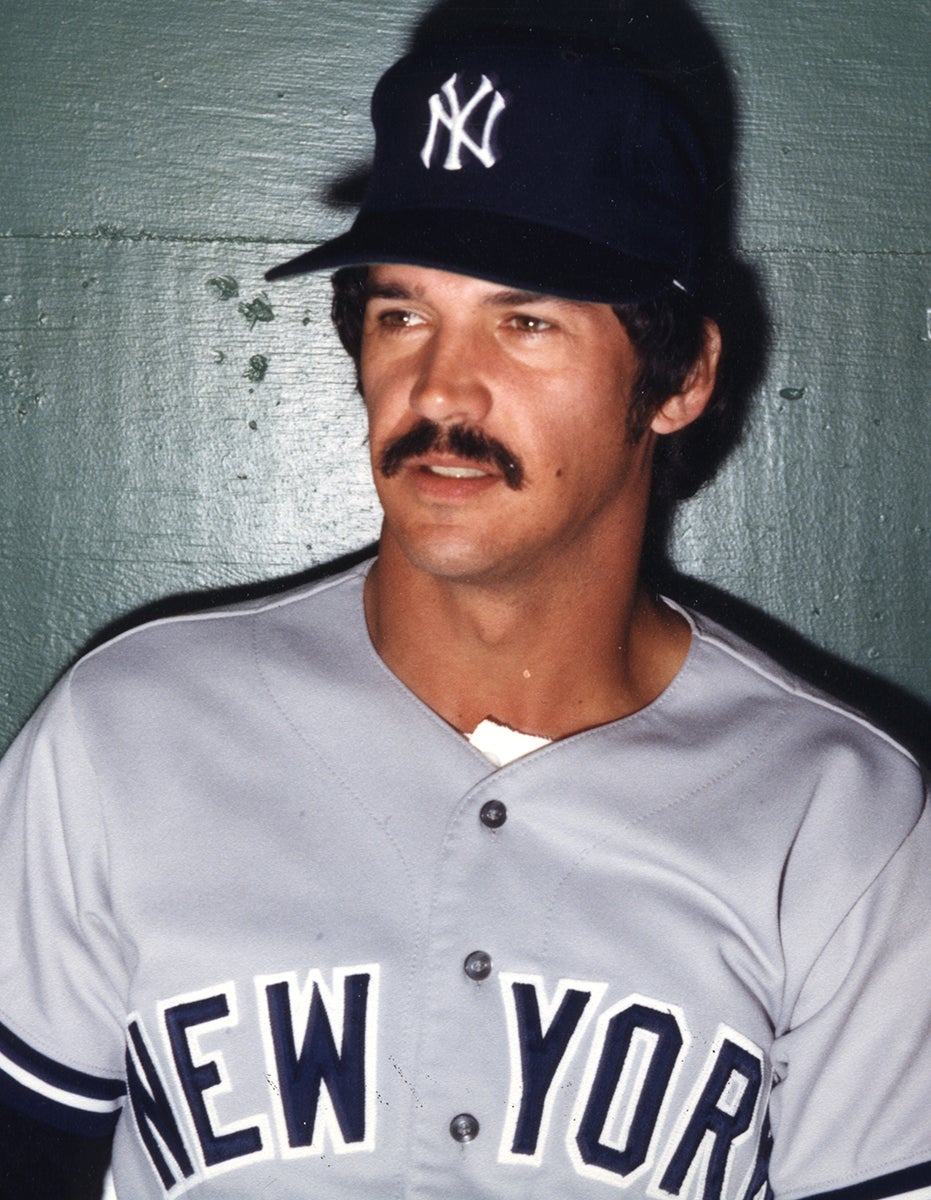
The vote was not as close as some expected, as Rice received 20 first-place votes and Guidry got the other eight. In today’s metrics-driven era, however, the result might have been different: Guidry led the AL in Wins Above Replacement with a 9.6 mark, two full points better than Rice.
Guidry had another excellent season in 1979, going 18-8 with 201 strikeouts and an AL-leading 2.78 ERA en route to a third-place finish in the AL Cy Young Award voting. But the Yankees slipped to fourth in the AL East during a season where Munson perished in a plane crash.
Also in 1979, Guidry signed a three-year contract extension worth about $700,000. In 1978, Guidry pitched under a deal that paid him somewhere between $38,000 and $47,000, depending on the source.
“(Guidry) will…be a Yankee,” president Al Rosen told the AP. “We will never let him get away.”
The Yankees returned to the postseason in 1980, winning the AL East as Guidry went 17-10 with a 3.56 ERA – numbers that included a three-week stint in the bullpen in August and September as he worked on his mechanics. He started Game 1 of the ALCS against the Royals but allowed four runs over three innings, taking the loss as Kansas City swept New York to advance to the World Series.
In 1981, Guidry went 11-5 with a 2.76 ERA and big league-leading 0.992 WHIP. The Yankees advanced to the World Series, where Guidry made two starts against the Dodgers – allowing four hits over seven innings in each appearance while striking out 15. But while Guidry won Game 1, he was tagged with a 2-1 loss in Game 5 as Jerry Reuss pitched a complete game. The Dodgers won the World Series in six games.
It would mark the last postseason games of Guidry’s career.
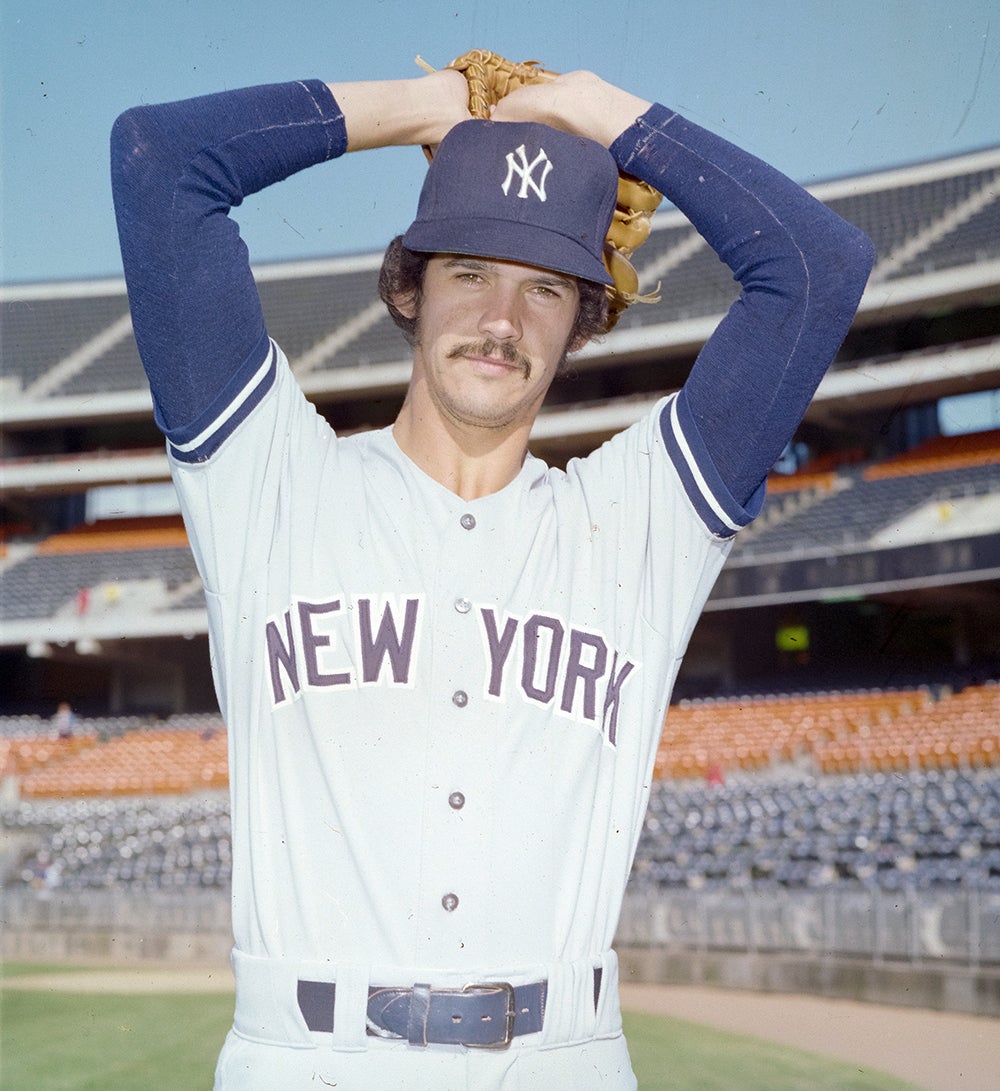
A free agent following the 1981 season, Guidry made it clear from the start of the process that he preferred to return to the Yankees. On Dec. 15, he signed a four-year deal with a fifth-year option worth just shy of $1 million per season.
“The Yankees can’t replace me,” Guidry told the Daily News. “They can get somebody else to wear my uniform, but they can’t replace me. I consider myself in a class with Jim Palmer and Tom Seaver and there aren’t many more like us coming along.”
Guidry gave the Yankees their money’s worth and more. He went 14-8 in 1982 while winning the first of five straight Gold Glove Awards. Then in 1983, Guidry was 21-9 with a 3.42 ERA and a career-best 21 complete games, earning him a fifth-place finish in the AL Cy Young voting and even some support in the AL MVP race.
But in 1984, Guidry landed on the disabled list for the first time in his career with a rib injury. He also endured financial issues that reportedly left him about $4 million in debt – much of that coming because a tool company he owned, which leased oil drilling supplies, had encountered hard times when the once-booming oil industry in Lafayette dried up due to a slump in oil prices.
Guidry finished the season with a 10-11 record and 4.51 ERA.
“I don’t know if it affected my pitching,” Guidry told the Daily News. “It was something I just tried to put out of my mind – especially when I would go out to the mound.
“I know this: When I was out there, I wasn’t thinking about being a million dollars in debt.”
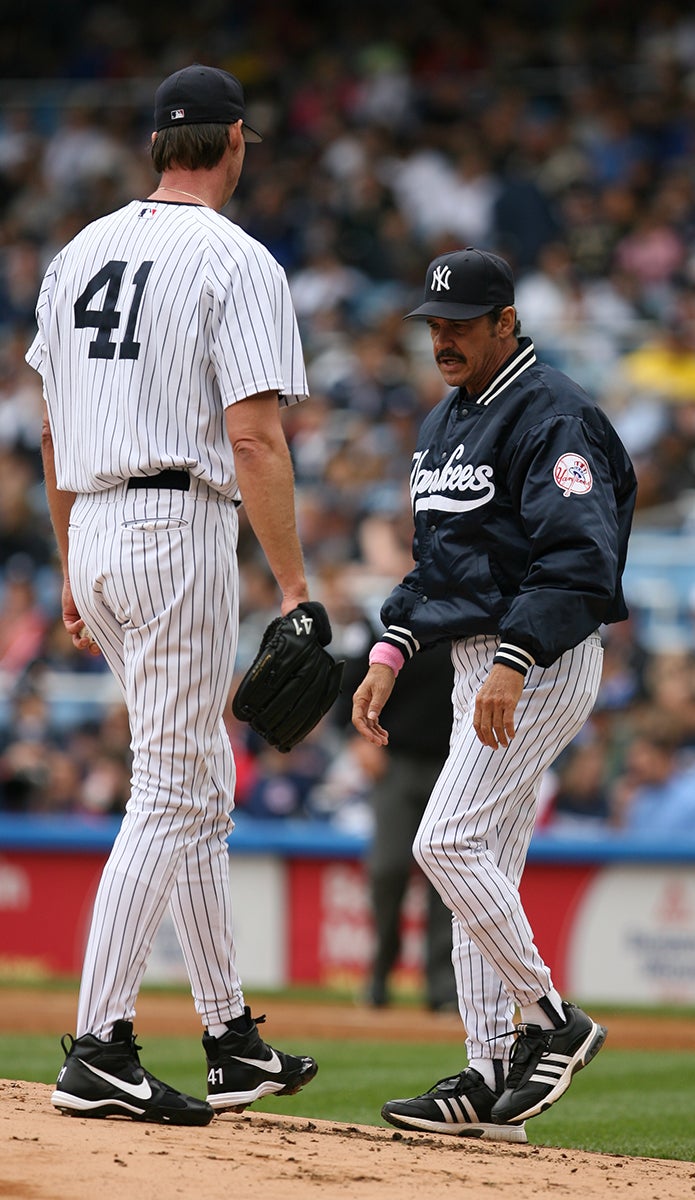
With his finances back in order, Guidry posted a 20-win season for a third time in 1985 – going 22-6 with a 3.27 ERA and finishing second to Kansas City’s Bret Saberhagen in the AL Cy Young Award voting. But entering his age-35 season in 1986, the workload began to catch up with Guidry. He was 9-12 that year with a 3.98 ERA, then began the 1987 in contract limbo when – as a free agent – no other teams showed interest and he was unable to re-sign with the Yankees (by rule) until May 1.
“I’ve spoken to clubs, but nobody’s said anything about dollars,” Guidry told the Associated Press. “And that’s the main thing.”
Agreeing to a two-year deal with the Yankees at the earliest possible date, Guidry went 5-8 with a 3.67 ERA in 17 starts. He had surgery on his rotator cuff after the season, which delayed his 1988 debut until July 1. After five starts, Guidry found himself back on the disabled list with a pulled left hamstring. He finished the season with a 2-3 record and 4.18 ERA in 12 appearances, then was informed that the Yankees would not offer him a contract for 1989.
But Yankees owner George Steinbrenner went against the wishes of his manager, Dallas Green, and invited Guidry to Spring Training as a non-roster player. But Guidry did not make the Opening Day roster and was assigned to Triple-A Columbus, where he went 1-5 in seven starts before retiring in July.
“I’ve had a great time here, and now it’s time for me to step out gracefully,” Guidry told the Daily Advertiser in Lafayette. “I’ve had a great career.
“I’m sorry (about quitting), but at the same time I’m happy because I can resume a normal life.”
Guidry returned home to Louisiana with a career record of 170-91 with a 3.29 ERA, 1,778 strikeouts, four All-Star Game selections and two World Series rings. His number 49 was retired by the Yankees in 2003, and he served as the team’s pitching coach in 2006 and 2007.
He never sought fame, but the pitcher known as Louisiana Lightning became a hero on the biggest stage baseball has to offer.
“It’s not that I’m not enjoying myself,” Guidry said in 1978. “But I don’t think I need the limelight.”
Craig Muder is the director of communications for the National Baseball Hall of Fame and Museum


